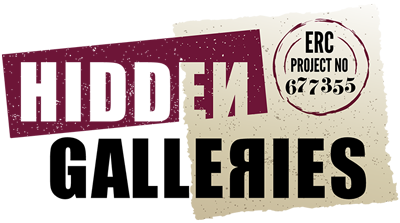Welcome to the Digital Database of the Hidden Galleries Project
To enter the database, click here
The aim of the database is to facilitate access to visual and textual materials relating to the creative practices and material culture of religious minority groups located within the files of the secret police in Central and Eastern Europe. The materials presented here, that in most cases have not been preserved elsewhere, relate to the religious lives of ordinary members of minority communities under repressive authoritarian and totalitarian regimes. The database has a regional scope and is designed to greater enable cross-cultural and transnational research.
This is an indicative database, the examples selected for the database are designed to demonstrate the kinds of materials produced by and about religious minorities that are located within secret police files. It is not a comprehensive record of all such materials in any particular archive or archive folder, but rather a tool to enable researchers to locate files that contain confiscated religious materials and visual images of religious groups created by the secret police.
Each entry in the database comprises one or more digital images accompanied by a brief description of the materials presented as well as some contextual information on the religious group and the file from which the images originate.
Access to secret police archives is strictly controlled and although the public and researchers can gain access, the collections are generally not easily searchable by topic, theme or time period, and locating materials such as confiscated photographs, surveillance photographs, brochures, icons, drawings, letters, hymns and diaries is extremely difficult and time-consuming.
Using the Database
1. The quality of the images in this database is highly variable. This is due to the different reproduction possibilities available at the various archival institutions. The images presented here are not intended for reproduction in published works, the copyright resides with the relevant archival institutions.
2. The database entries give the full archival reference for materials and provide links to the relevant archive webpages (where available) or the contact details of the archive. In order to access the full materials, researchers should approach the relevant archival institution
3. For reasons of data protection and privacy, the personal details of individuals are not given in the database. Case files are traceable using the archive references provided.
4. The database entries indicate the extent and nature of the material to be found in a given archive folder but only provide digital images of a selection of the materials.
5. The database can also be searched by religious community, country and location and security agency. We use “secret police” as the standard catch-all term for all security agencies with the following acronyms used for the specific national agencies: NKVD, NKGB, MGB, KGB, Securitate, Siguranța, ÁVO, ÁVH.
6. The name of the author of each entry is listed and should be used when referencing the written materials.
7. Wherever possible entries offer a bibliography of related published work and relevant websites.
If you would like to contribute an entry to the Hidden Galleries Database please email:
hiddengalleries@ucc.ie
